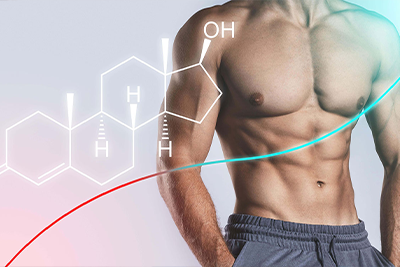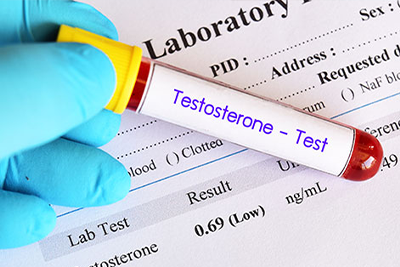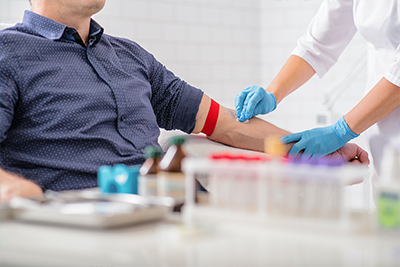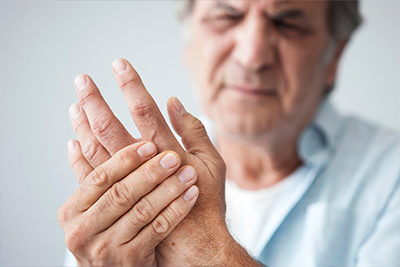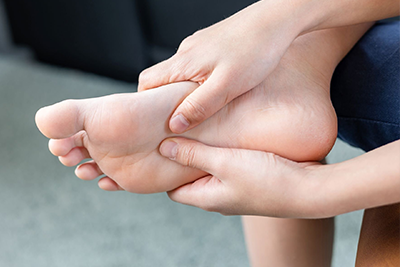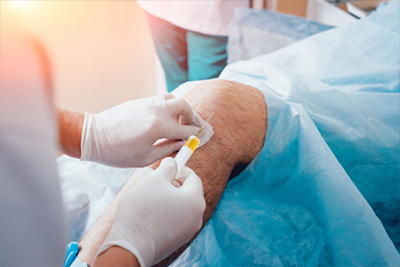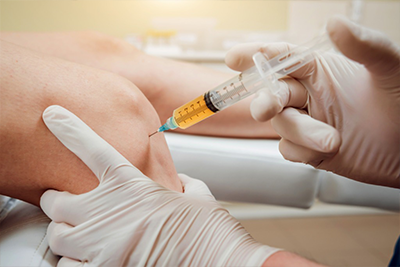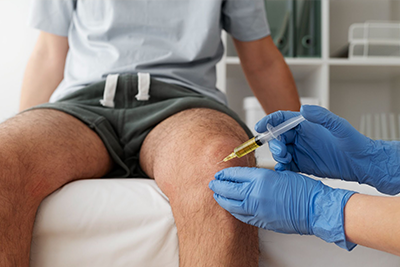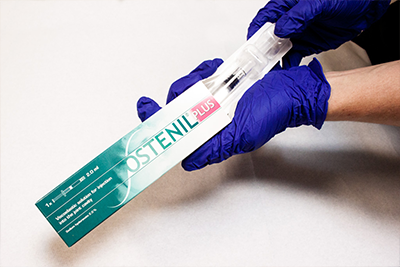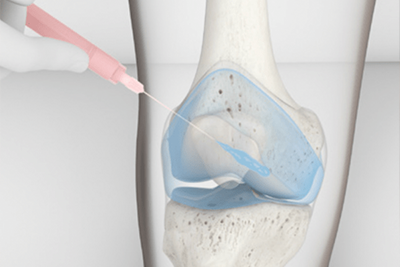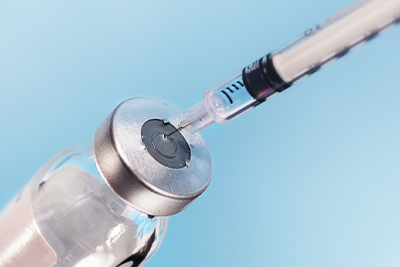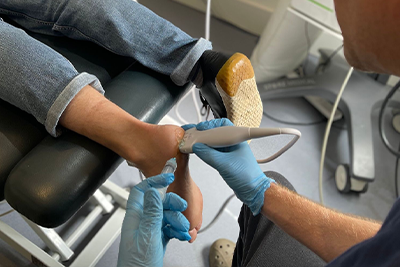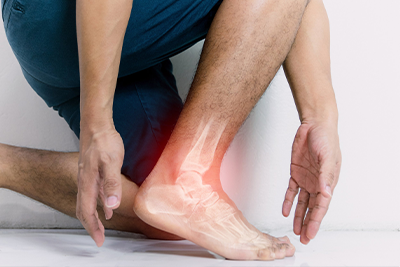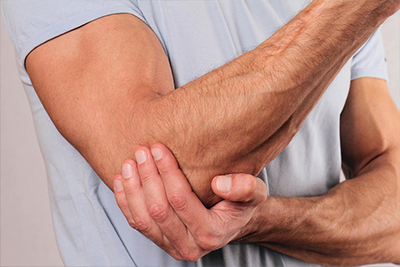Testosterone Replacement Therapy, commonly known as TRT, is a treatment approach designed to restore normal testosterone levels in men diagnosed with testosterone deficiency or hypogonadism. This condition occurs when the body doesn’t produce enough testosterone, which plays a crucial role in masculine growth and development during puberty and maintains men’s health throughout life. TRT has gained increased attention in recent years to address the various physical, sexual, and psychological symptoms associated with low testosterone levels.
Understanding testosterone deficiency is crucial as it can significantly affect a man’s quality of life. Testosterone deficiency, often undiagnosed, can lead to various symptoms, including diminished energy, low mood, reduced muscle mass, increased body fat, and decreased libido, among others. By understanding testosterone deficiency, men can seek early diagnosis and treatment, thereby preventing the long-term impacts of untreated low testosterone.
The Role of Testosterone in Men’s Health
Testosterone is a vital hormone in men’s health, predominantly produced in the testicles, with a smaller amount produced by the adrenal glands. It plays a significant role in developing male reproductive tissues, such as the testes and prostate. Also, it contributes to the development of secondary sexual characteristics during puberty, such as facial and body hair growth, voice deepening, and muscle mass increase. Testosterone is essential for maintaining overall health and well-being in men.
Impact of testosterone on physical health and mental wellbeing
Testosterone has a wide-ranging impact on a man’s physical health and mental well-being, including:
- Sexual function: Testosterone is crucial for maintaining libido and erectile function, sperm production and overall reproductive health.
- Muscle mass and strength: Testosterone promotes muscle growth and strength, contributing to leaner body composition and physical performance.
- Bone density: Testosterone plays a vital role in maintaining bone density, which helps to prevent osteoporosis and fractures as men age.
- Fat distribution: Testosterone helps regulate fat distribution in the body, reducing the accumulation of excess body fat, particularly around the abdomen.
- Mood and mental health: Testosterone influences mood, cognitive function, and overall well-being. Low testosterone levels have been associated with depression, anxiety, irritability, and cognitive decline.
- Energy levels: Testosterone helps maintain energy levels, and men with low testosterone may experience fatigue, lethargy, and reduced stamina.
As testosterone levels decline naturally with age or due to medical conditions, it can lead to various symptoms that negatively impact a man’s overall quality of life. Recognising the importance of testosterone in men’s health is essential to address these issues and seek appropriate treatment.
Recognising Testosterone Deficiency: Signs and Symptoms
Physical symptoms
Testosterone deficiency can manifest in several physical symptoms. These can include persistent fatigue, despite adequate sleep, which can interfere with daily activities. Weight gain, particularly around the abdomen, and a noticeable muscle mass and strength reduction are typical. Some men may experience thinning hair or increased body fat. It’s important to note that while these symptoms can be associated with low testosterone, they may also indicate other health issues. Therefore, a proper medical evaluation is necessary for accurate diagnosis.
Sexual symptoms
Testosterone plays a critical role in maintaining sexual function in men. A decrease in sexual desire or libido is often one of the first signs of testosterone deficiency. Men may also experience erectile dysfunction, difficulty achieving or maintaining an erection, or reduced sexual activity. Changes in testicle size or reduced semen volume can also indicate low testosterone levels.
Psychological symptoms
The impact of testosterone deficiency isn’t limited to physical and sexual health; it can also significantly affect mental well-being. Low testosterone levels can lead to mood swings, irritability, or increased emotional sensitivity. Men may experience feelings of depression, anxiety, or a general sense of dissatisfaction with life. Cognitive symptoms such as memory, focus, and decision-making difficulties may also occur. As with physical symptoms, these psychological symptoms may be related to various factors, highlighting the importance of seeking professional medical advice for a comprehensive assessment.
Causes and Risk Factors of Testosterone Deficiency
Testosterone levels naturally decline with age, starting around 30 and continuing at a rate of about 1% per year. This age-related decline in testosterone is a normal part of the ageing process, and some men may not experience significant symptoms. However, this decline can lead to testosterone deficiency in others, resulting in various physical, sexual, and psychological symptoms that can impact their quality of life.
Lifestyle factors contributing to low testosterone
Several lifestyle factors can contribute to low testosterone levels. These include:
- Obesity: Carrying excess body weight, particularly around the abdomen, has been linked to lower testosterone levels due to increased production of the hormone oestrogen.
- Poor diet: Consuming a diet high in processed foods, sugars, and unhealthy fats can negatively impact hormone production, including testosterone.
- Lack of exercise: A sedentary lifestyle may contribute to decreased testosterone levels. Regular physical activity, particularly strength training, can help maintain or increase testosterone production.
- Sleep deprivation: Insufficient sleep can disrupt hormone production, including testosterone. Ensuring adequate sleep is essential for overall health and hormone balance.
- Excessive alcohol consumption: High alcohol intake can impair testosterone production and metabolism, leading to lower levels of the hormone.
Medical conditions that can cause testosterone deficiency
In addition to age-related decline and lifestyle factors, certain medical conditions can cause testosterone deficiency. Some of these include:
- Hypogonadism: This condition occurs when the testicles do not produce enough testosterone due to a problem with the testicles themselves (primary hypogonadism) or the pituitary gland, which controls hormone production (secondary hypogonadism).
- Chronic diseases: Conditions such as diabetes, kidney disease, liver disease, and HIV/AIDS can negatively impact testosterone production.
- Hormone imbalances: Disorders affecting the hypothalamus or pituitary gland, such as a pituitary tumour, can disrupt hormone production and regulation, leading to testosterone deficiency.
- Medications: Certain medications, such as opioids or glucocorticoids, can interfere with testosterone production.
- Injury or trauma: Damage to the testicles, such as from an injury or radiation therapy, can impair testosterone production.
Diagnosis of Testosterone Deficiency
Diagnosing testosterone deficiency involves several steps. Initially, a patient will consult with their General Practitioner (GP) to discuss symptoms. The GP will consider the patient’s medical history, conduct a physical examination, and discuss lifestyle factors contributing to low testosterone levels. If the GP suspects testosterone deficiency, they may refer the patient to a specialist, such as an endocrinologist or urologist, for further evaluation and testing.
Role of blood tests in diagnosing low testosterone
Blood tests play a vital role in diagnosing testosterone deficiency. They measure the testosterone level in the blood and help determine if it falls within the normal range. The normal range can vary depending on the laboratory, but a typical range is about 300 to 1,000 nanograms per decilitre (ng/dL). It’s important to note that testosterone levels can fluctuate throughout the day, with the highest levels typically occurring in the morning. Therefore, doctors often recommend blood tests in the morning to obtain the most accurate results. If the initial test indicates low testosterone, a repeat test is typically performed to confirm the diagnosis.
Importance of differential diagnosis
Differential diagnosis is an essential aspect of diagnosing testosterone deficiency. This is because many symptoms of low testosterone, such as fatigue, depression, and reduced libido, can also be caused by other medical conditions or lifestyle factors. For example, these symptoms could be related to stress, depression, chronic illness, medication side effects, or unhealthy lifestyle habits such as lack of exercise or poor diet. Therefore, a thorough evaluation is necessary to rule out other potential causes of symptoms and to ensure an accurate diagnosis of testosterone deficiency.
Introduction to Testosterone Replacement Therapy
Testosterone Replacement Therapy (TRT) is a medical treatment designed to restore normal testosterone levels in men diagnosed with testosterone deficiency. It works by supplementing the body’s natural testosterone production, helping to maintain testosterone levels within the normal range. The primary goal of TRT is to alleviate symptoms associated with low testosterone, such as decreased sexual function, loss of muscle mass, fatigue, and mood disturbances.
Forms of TRT available in the UK
TRT is available in various forms to accommodate individual patient needs and preferences. Here are the most common forms:
- Gels: Testosterone gel is applied to the skin, usually on the arms, shoulders, or abdomen, where it’s absorbed into the body. It must be applied daily, and it’s important to let the gel dry before dressing and wash hands thoroughly after application to avoid transferring the medication to others.
- Patches: Testosterone patches are applied to the skin, usually on the back, stomach, thighs, or upper arms. The patches release testosterone gradually into the body over time. Like gels, patches are typically used daily.
- Injections: Testosterone can be injected directly into the muscle, usually the buttocks or thigh. The frequency of injections can vary from once a week to once every two weeks, depending on the specific formulation.
- Pellets: Testosterone pellets are a longer-term option, where small pellets are inserted under the skin, typically in the hip or buttock area, during a minor surgical procedure. The pellets slowly release testosterone over several months.
The choice of TRT form depends on various factors, including patient preference, lifestyle, cost, and potential side effects. Discussing these factors with a healthcare provider to determine the most suitable form of TRT is important.
Potential Benefits of Testosterone Replacement Therapy
1. Improvement in sexual function and libido
One of the most significant benefits of TRT is the potential improvement in sexual function. This includes increased sexual desire or libido, improved erectile function, and in some cases, increased sperm production. These changes can have a profound positive impact on a man’s sexual health and relationships.
2. Increase in energy levels and mood enhancement
Many men with low testosterone report feelings of fatigue and lethargy. TRT can help improve energy levels, leading to increased vitality and motivation. The therapy may also enhance mood, reducing feelings of depression and anxiety associated with low testosterone levels. This can result in improved mental well-being and overall quality of life.
3. Promotion of muscle mass and bone density
TRT can help increase muscle mass and strength, contributing to a leaner body composition and improved physical performance. It can also promote bone density, reducing the risk of osteoporosis and fractures as men age. These physical improvements can enhance overall health and well-being and improve body image and self-confidence.
4. Overall quality of life improvements
TRT can significantly improve the overall quality of life by addressing the various symptoms of low testosterone. This includes improved physical health, mental well-being, sexual function, and relationships. It’s important to note that individual responses to TRT can vary, and it may not resolve all symptoms in all men. Regular follow-up with a healthcare provider is essential to monitor response to treatment and adjust the treatment plan as needed.
Risks and Side Effects of Testosterone Replacement Therapy
While Testosterone Replacement Therapy can provide many benefits, it has potential side effects. Common ones include acne and oily skin due to increased sebum production. Some men may also experience mood swings or aggression, particularly when starting a treatment or adjusting the dosage. Fluid retention, causing swelling in the ankles or feet, is another possible side effect.
Potential risks
Along with side effects, there are several risks associated with TRT. These include increased red blood cells, which can lead to blood clots and stroke, particularly in older men. The therapy may also exacerbate sleep apnoea, a condition where breathing temporarily stops during sleep. Men with prostate issues must be cautious, as TRT can stimulate prostate growth. While research is ongoing, there is some concern that TRT could increase the risk of heart disease.
Understanding and managing these risks
It’s crucial for anyone considering TRT to understand these potential risks and side effects. Regular monitoring and consultations with a healthcare provider are essential to manage these risks effectively. This typically involves routine blood tests to check testosterone levels, prostate health, and blood cell counts, among other things.
Remember, TRT aims to enhance the quality of life, including managing potential risks. It’s essential to have open, ongoing conversations with your healthcare provider about any concerns or side effects you might be experiencing. Together, you can make informed decisions about your treatment plan.
Patient Journey: From Diagnosis to Treatment
Navigating the UK’s healthcare system for Testosterone Replacement Therapy involves several steps. If you’re experiencing symptoms of low testosterone, your first point of contact is usually your General Practitioner (GP), who can assess your symptoms and medical history. The GP may refer you to a specialist, such as an endocrinologist or urologist, for further evaluation.
Under the National Health Service (NHS), access to TRT is typically restricted to men diagnosed with hypogonadism or other underlying conditions that result in low testosterone levels. However, waiting times for specialist appointments and treatments can be long under the NHS, leading some men to seek care through private clinics, which can offer quicker access to treatment but at a cost.
Whether you receive care through the NHS or a private clinic, it’s essential to ensure you are receiving care from a healthcare provider experienced in diagnosing and managing testosterone deficiency to ensure appropriate treatment and monitoring.
The role of ongoing monitoring and adjustments in successful TRT
Once you start TRT, ongoing monitoring is crucial to ensure the treatment works effectively and safely. This typically involves regular blood tests to measure your testosterone levels and to monitor for potential side effects, such as changes in blood cell counts or prostate health. Based on these results, your healthcare provider may adjust your treatment plan as needed, such as changing the dose or frequency of your testosterone replacement.
The goal of TRT is not just to increase testosterone levels but to alleviate symptoms and improve your quality of life. Therefore, regular follow-up appointments also allow you to discuss your feelings about the treatment and any concerns or side effects you may be experiencing.
Importance of patient-doctor communication in managing treatment
Effective communication between you and your healthcare provider is critical to managing your TRT treatment. Your healthcare provider can provide information and guidance, but ultimately, the success of your treatment depends on your active participation and communication. It’s important to speak openly about your symptoms, any side effects you’re experiencing, and your goals for treatment. Don’t hesitate to ask questions, voice concerns, or seek further clarification about any aspect of your treatment. Working together allows you to navigate the journey from diagnosis to treatment and beyond, aiming for the best possible outcome.
Myths About Testosterone Replacement Therapy
There are numerous misconceptions about Testosterone Replacement Therapy (TRT) that can deter men from seeking treatment or create unrealistic expectations. Some of these include:
“TRT is only for older men”: While testosterone levels naturally decline with age, younger men can also experience testosterone deficiency due to a variety of health conditions. TRT is for any man diagnosed with low testosterone, regardless of age.
“TRT will make you aggressive or ‘roid rage'”: While testosterone can influence mood, most men on TRT report improved mood and well-being. Excessive aggression is typically associated with misuse or overuse of testosterone and inadequate TRT.
“TRT is a magic bullet for ageing”: TRT can help alleviate symptoms of low testosterone, but it is not a cure-all for ageing. A healthy lifestyle, including a balanced diet and regular exercise, is essential for overall health and well-being.
Presenting evidence-based facts about TRT
Amidst these misconceptions, it’s important to consider evidence-based facts about TRT:
- TRT can effectively alleviate symptoms associated with low testosterone, such as low libido, fatigue, and mood changes.
- TRT is generally safe when monitored by a healthcare professional, but it can have side effects and risks that must be managed.
- TRT requires ongoing treatment. Stopping TRT will likely lead to a return of symptoms as testosterone levels drop again.
- TRT can improve quality of life, but individual responses vary, and it’s important to have realistic expectations about what TRT can and cannot do.
In Summary
Understanding testosterone deficiency and the role of Testosterone Replacement Therapy (TRT) is crucial for any man experiencing the symptoms associated with low testosterone levels. This vital hormone significantly impacts men’s physical health, mental well-being, and overall quality of life. When testosterone levels fall below the normal range, it can lead to a host of symptoms that can be distressing and disruptive. However, TRT offers a potential solution to alleviate these symptoms and help men regain their vitality.
If you’re experiencing low testosterone symptoms, seeking medical advice is essential. Remember, symptoms like fatigue, low libido, mood changes, and reduced muscle mass are not just a normal part of ageing and should not be ignored. By consulting with a healthcare professional, you can get a proper diagnosis and explore potential treatment options, including TRT.
TRT has shown great potential in improving the quality of life for men with testosterone deficiency. With the right approach and the guidance of an experienced healthcare provider, TRT can be a game-changer for men with low testosterone, offering them a path to a healthier, more vibrant life. Boosting testosterone levels can improve sexual function, increase energy levels, enhance mood, and promote muscle mass and bone density. However, it’s essential to understand that TRT is not a one-size-fits-all solution and requires ongoing monitoring and adjustments to ensure its effectiveness and safety.
Related Articles
- Testosterone Replacement Therapy (TRT) – What You Need To Know
- Understanding the Link Between Testosterone and Erectile Dysfunction
- The Connection Between Low Testosterone and Impotence: What You Need to Know
- The Potential of Testosterone Replacement Therapy: Benefits, Risks, and Myths
- Understanding the Signs and Symptoms of Low Testosterone Every Man Should Know About

